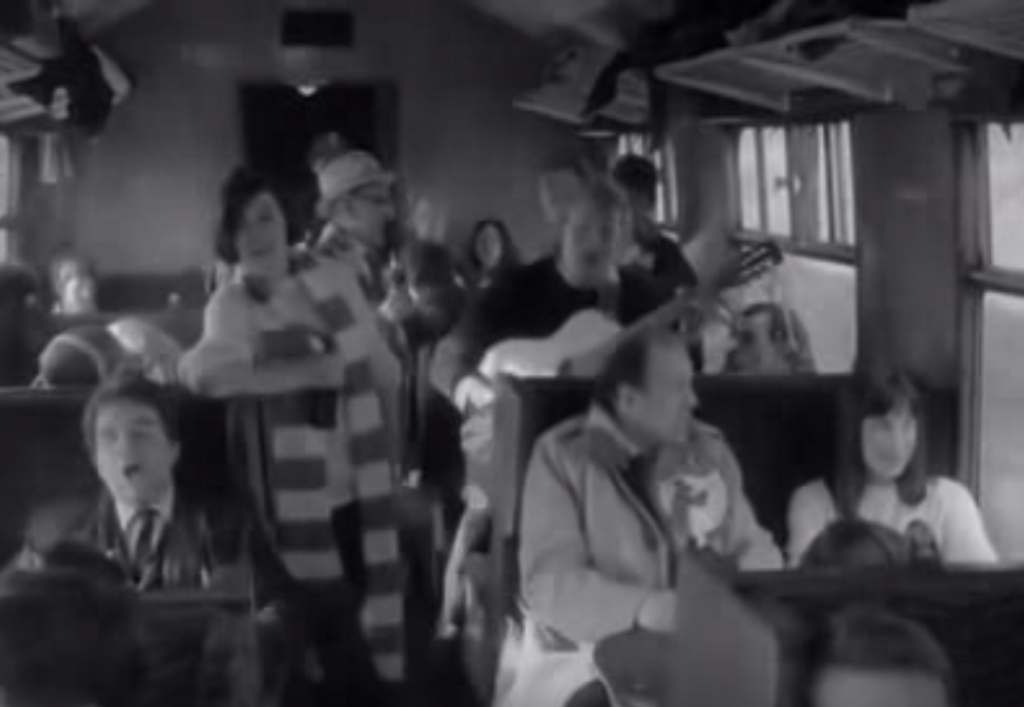
GB
1967
46mins
Dir: Lindsay Anderson
Starring: Arthur Lowe and Patricia Healey
An impassive young girl travels from her mundane London life back to her home in the north of England where she boards a surreal bus tour
Seen through the poetic eye of the camera, this short drama is a commentary of doomed British morbidity. The screenplay was jointly adapted with Shelagh Delaney from a short story in her collection, Sweetly Sings the Donkey (1963) and was originally commissioned by producer Oscar Lewenstein as one third of a ‘portmanteau’ feature entitled Red White and Zero, in which The White Bus was the’White’ part. There are scenes filmed at both London Paddington and Manchester Piccadilly stations with good shots of maroon-liveried BR Mk1 coaches at both, but no locomotives. In addition, Class 104 BRCW DMU’s are visible in the background of one shot at Piccadilly but despite this, the exterior shot is that of Manchester Central. There is also a fairly lengthy musical scene filmed inside a Mk1. Incidentally, the factory sequences in this film were shot in Trafford Park, including the Metropolitan-Vickers works, birthplace of the Class 28 Co-Bo’s. The other two parts of the film also featured trains, see Red and Blue (Red) and The Ride of the Valkyrie (Zero).






